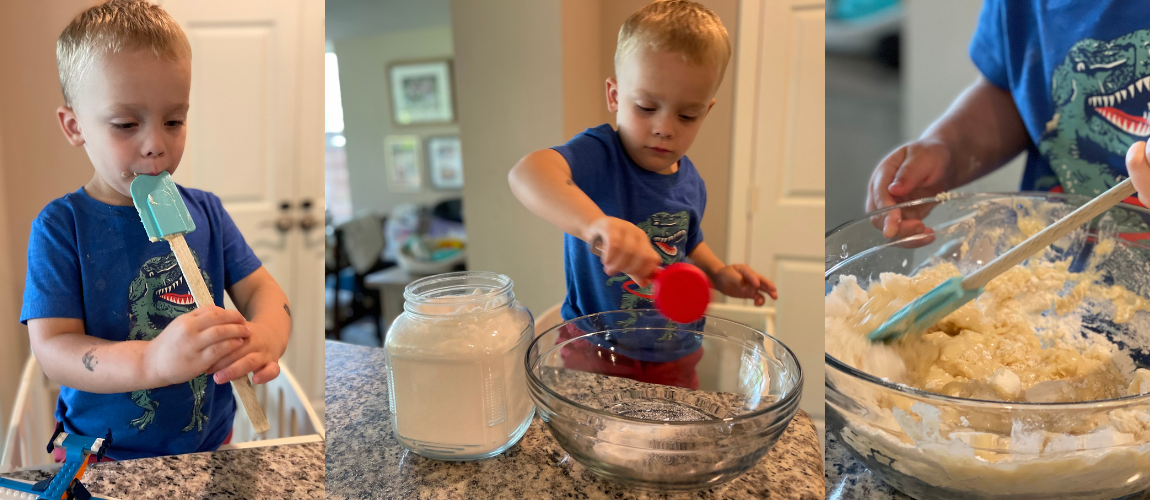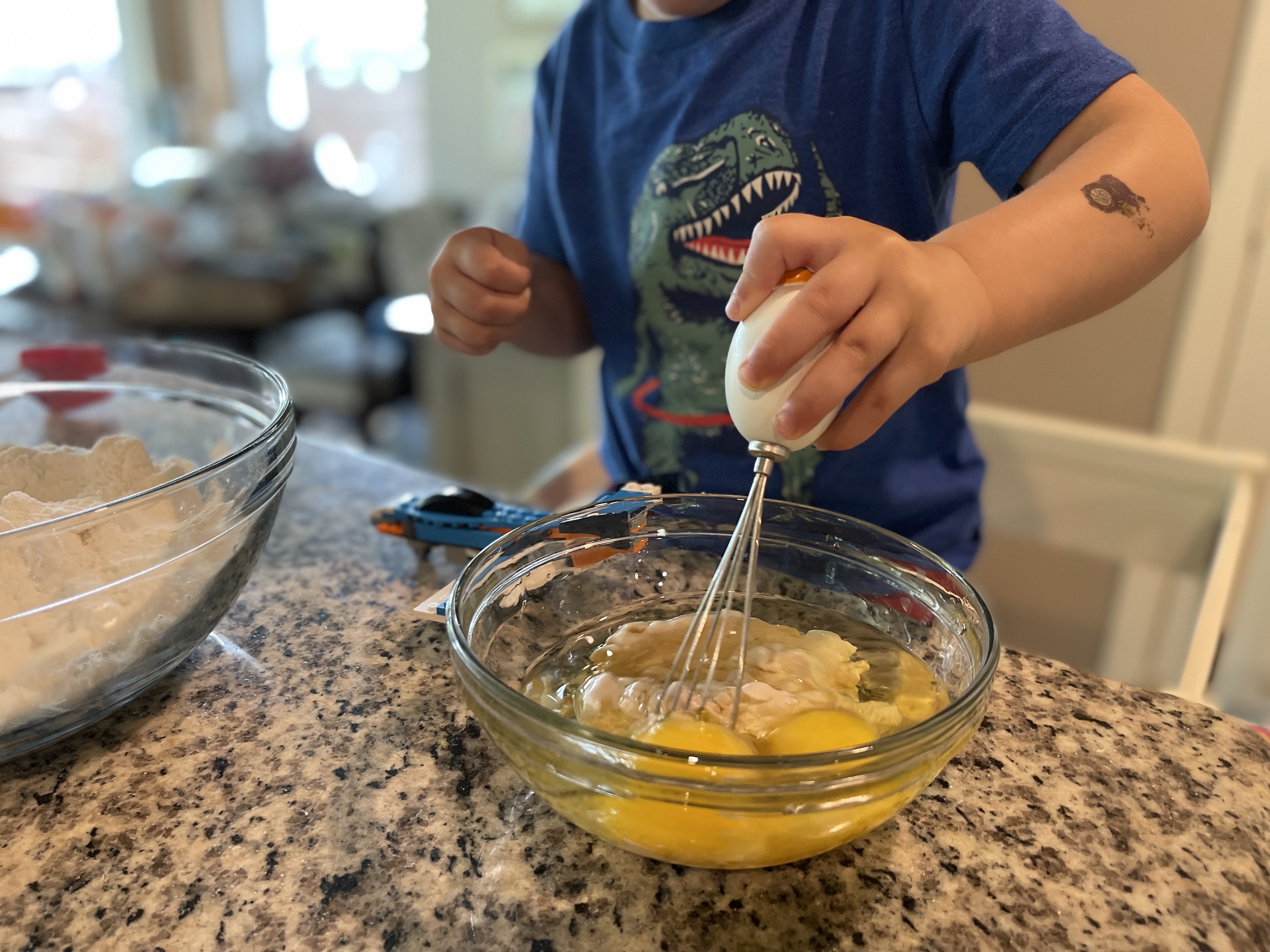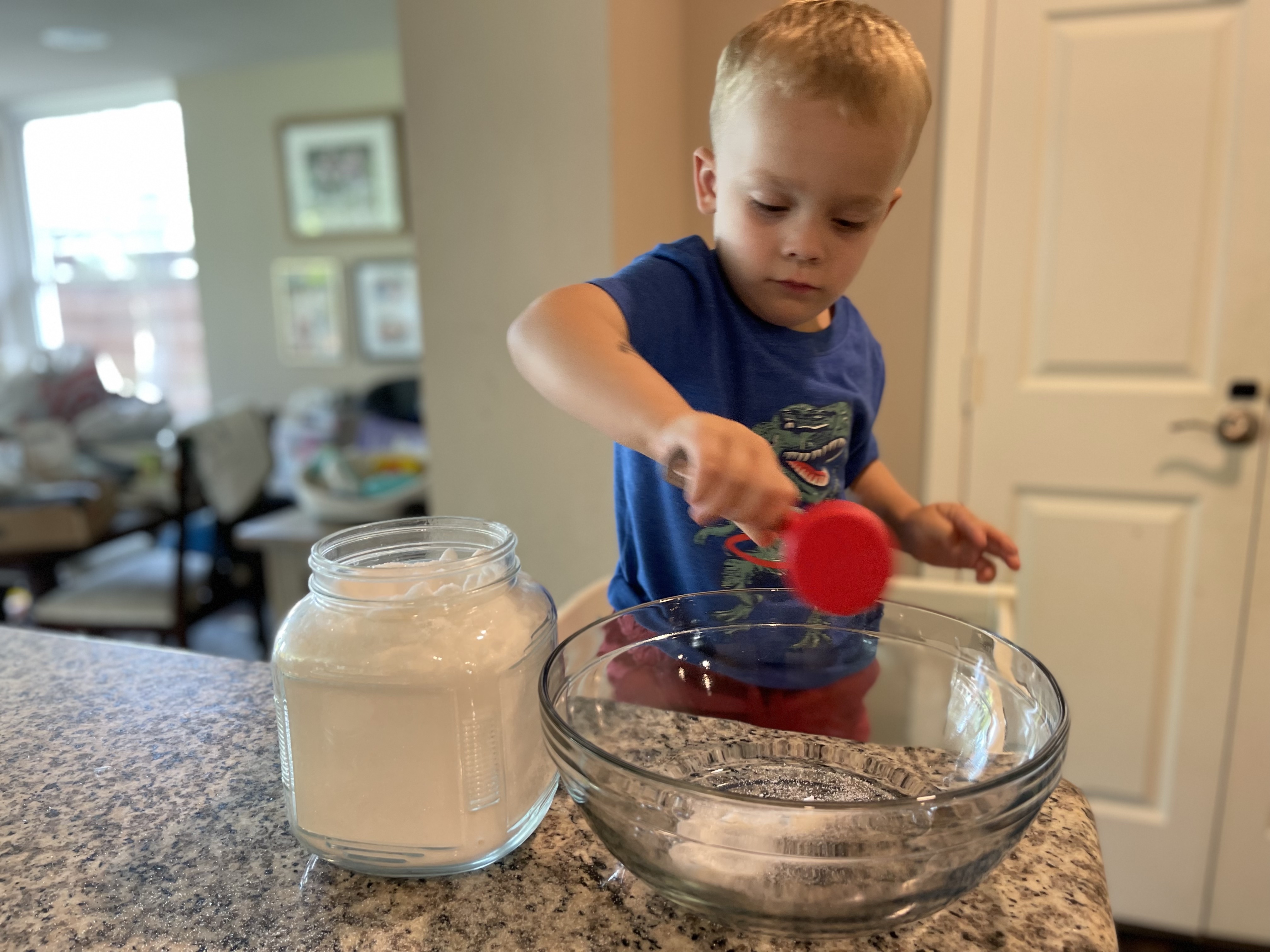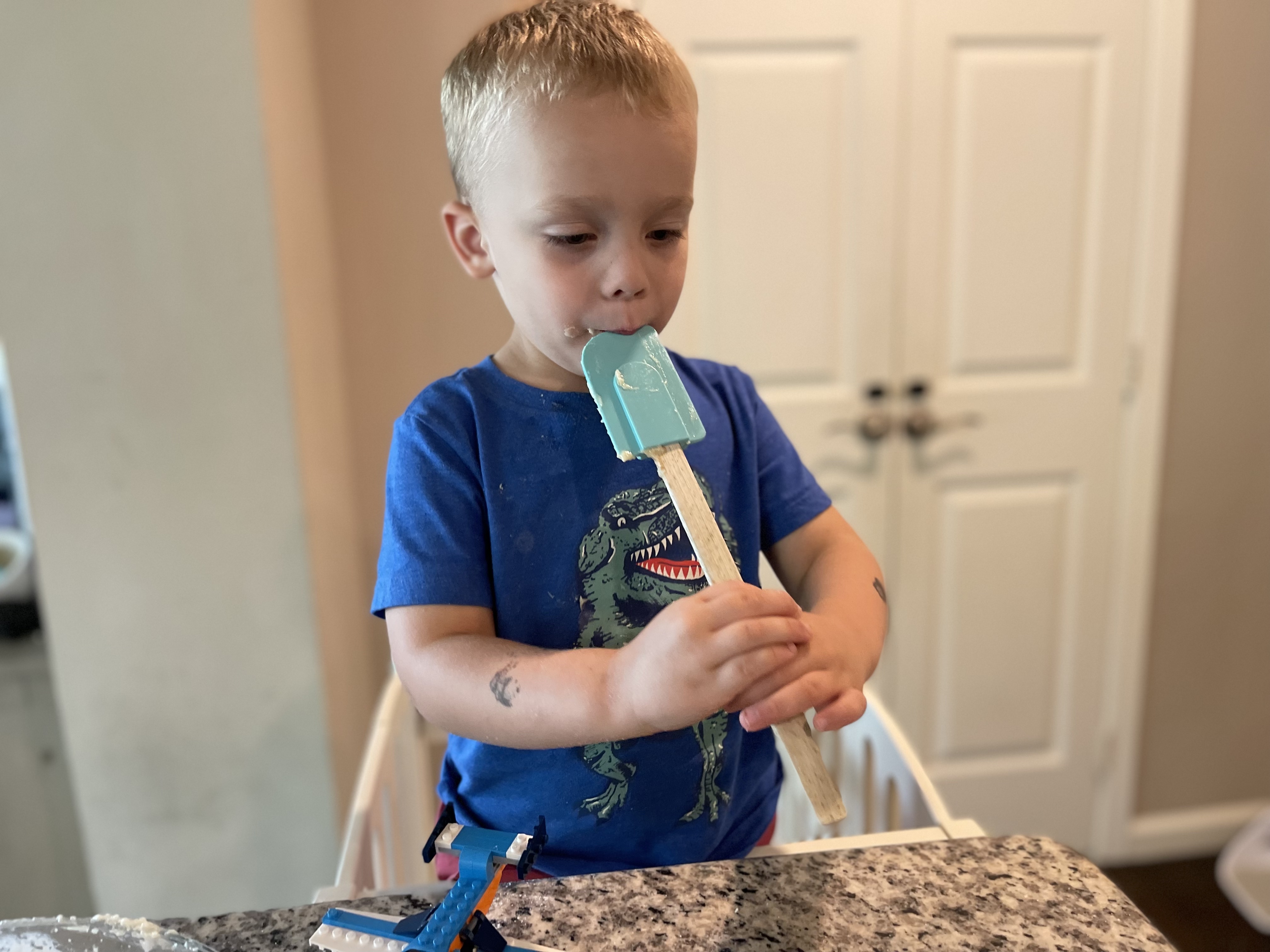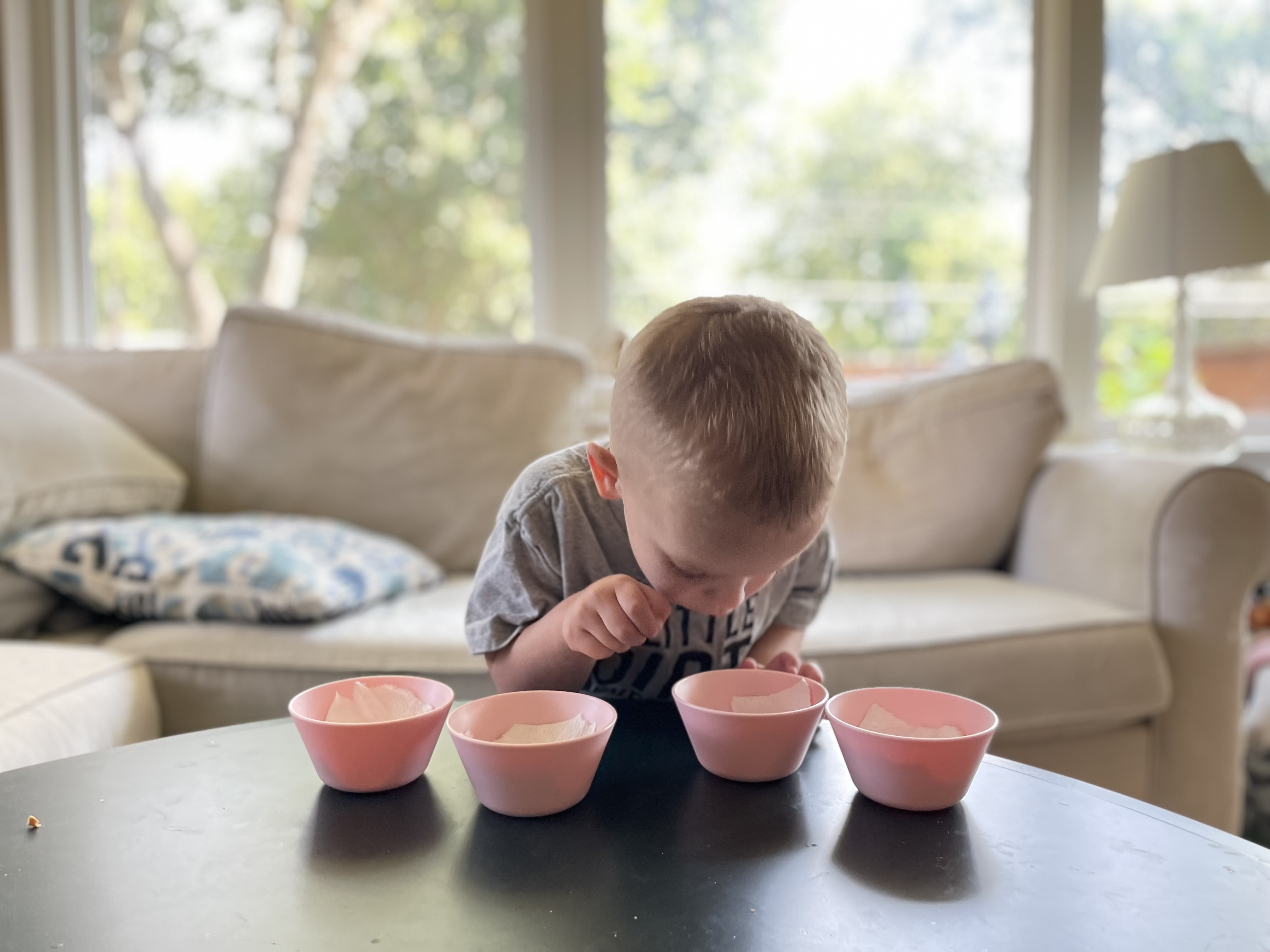Cooking is an activity kids love, and it can be a super way to help young ones connect to the food they eat and help them learn more about where our food comes from. But, it can be hard to know how to let littles get their hands dirty in the kitchen in a way that is safe and actually results in food to eat. With just the right tips, it can be done.
There are also loads of learning benefits to cooking with children:
- Following a recipe supports receptive language skills.
- Cooking reinforces important math and science concepts like measurement, volume and capacity and gives kids a chance to observe what happens when ingredients are mixed together and how they change with heat or cold.
- Using tools to mix, stir, cut and pour ingredients enhances fine motor strength and control.
- Working on real-world tasks boosts confidence and provides kids with life skills they will be able to build on and call on as they get older.
- And taking time to smell, touch and taste ingredients activates multiple senses, helping kids to feel more alert and focused.
As part of our October Activity Calendar (get your free copy at tinkergarten.com/calendar!), we’re celebrating World Food Day on October 16th with fun ways to celebrate harvest, food, cooking and the sustenance that nature provides.
Here are some tips for involving kids in the process of cooking in a way that’s safe, manageable and guarantees a good experience for everyone.
Choose the right time
Choose a time to involve kids in cooking when you are not on a tight schedule. Instead of having them help with dinner when everyone is hungry and anxiously awaiting their meal, start meal prepping well in advance—or enlist kids’ help in making a leisurely snack.
Choose the right meal
Pick something that kids will actually eat. Start simple; five or fewer ingredients is a good guideline.
Offer the right tools
Offering kids-safe and kid-sized tools can help kids feel confident as chefs—and can reduce risk (and mess). Offer mini-sized whisks and spatulas for stirring and mixing and narrow rolling pins for baking (2-inch diameter versions fit well in little hands). Kids can safely use crinkle cutters and nylon or wooden cutting knives for slicing fruits and softer veggies. Doing food prep on the kitchen table rather than the kitchen counter (or offering a stool) puts kids at the right height for cooking.
Choose the right tasks
Think about what kids can help with independently or with minimal support. Measuring and pouring ingredients into a bowl, mixing ingredients together, brushing or “painting” oil onto bread or vegetables, removing seeds or husking corn and rinsing veggies are all great entry points for most kids.
Older kids can help with cutting—start with softer foods like mushrooms or strawberries and offer kid-safe options, such as a butter knife, crinkle cutter or a wooden or nylon knife. Doing some prep work in advance will help reduce how much time kids need to wait to get to their “part.”
Embrace mistakes and mess
Embrace cooking “mistakes” as opportunities to help kids learn about measuring, pouring and cooking and build skills over time. If your ingredients are likely to make a big mess if spilled, consider placing a towel or drop cloth on the floor for easy clean-up. Have damp and dry kitchen towels handy for messy hands or surfaces.
Enlist kids’ help in wiping down cooking surface afterwards. Measure ingredients separately and put them in small bowls, like they do on TV cooking shows. That way if kids pour a little bit too much or crack an egg shell into the bowl, they can help adjust and learn from it (and take the worry out of potentially ruining the meal).
Taste as you go!
Offer safe ingredients for kids to taste. Talk about the textures and flavors of the ingredients. When possible, try out the ingredients in different states (raw vs. cooked veggies) and invite your child to describe the differences and tell you which version they like best.
Explore the flavor of different herbs and spices. Wonder together where the food was grown, who cared for the plants, animals and land that contributed to the meal. As you taste and talk about the ingredients, kids can take a moment to share gratitude.
Engage the senses
Slow down to let kids to use all their senses to engage with the ingredients. Feel the softness of the herbs, smell the spices, listen to the sound of food sizzling in the pan.
Play with your food!
If kids decide they are done helping or you need to move on to grown-up cooking tasks, offer some of the ingredients and tools for kids to continue playing and experimenting with. A bowl of water, flour, rice or beans and some spoons or measuring cups will keep kids engaged in cooking play (and they’ll be practicing skills they can use in future projects).
Want a starting place?
Try out our World Food Day DIY and try out some of our favorite kid-friendly campfire recipes. Invite kids to practice their pretend cooking skills during play time with our Fall feast DIY.
Get your free copy of the October calendar at tinkergarten.com/calendar.
